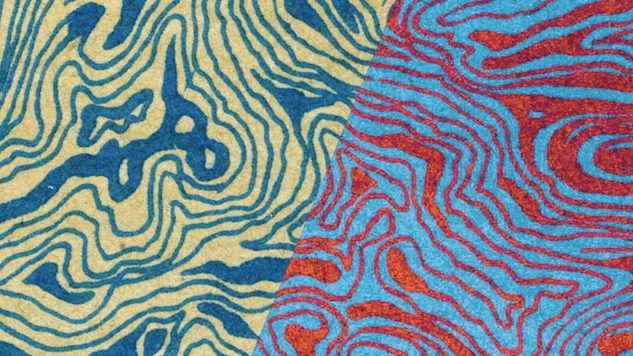Adornment Equals Survival: The Collected Schizophrenias and the Power of Personal Appearance
Books Features esme weijun wang
What Esmé Weijun Wang delivers in The Collected Schizophrenias is a panoptic view of the titular affliction. What she offers is a being opened up, vivisected—she is alive, she is Esmé, essayist par excellence, master of rhetoric. She is not schizoaffective disorder, nor any of her previous and future titles pulled from the crowd-sourced demonology of the DSM-5; she never has been, never will be, no matter how deep the psychosis or fracturing the disorder.
I am not my borderline personality disorder. I am a person, like Wang, who has a chronic disorder, one whose symptoms must be managed and mitigated and tamped down like gun powder, lest I go off and put another cannonade through the thoracic cavities of lovers and friends. It is a fight on all fronts—numerous times I have come close to sobbing in the lead up to this essay, because I felt empty, because the electrical impulses striking like a death adder between dendrites require stoking to ignite my prose. And this is while I am the most stable I’ve ever been, which feels like the problem…like a sacrifice—a minor sacrifice—to never hurt others so indiscriminately again. Like all fights, this requires a suit of armor.
 Embroidered in her essays, Wang describes how fashion helps her present as high-functioning, serving as a shield against the cruel perceptions of the world. The projection of one’s self with personal agency is an incredible tool, a mark of human society as old as human society, a declaration of ipseity and exercise in power. It is a form of control I utilize as well, an intervention regimen performed not in a therapist’s office but in front of a mirror. It’s not found in an orange bottle but in the lust-inducing visual merchandizing of Topshop, where jewelry hangs like broken limbs.
Embroidered in her essays, Wang describes how fashion helps her present as high-functioning, serving as a shield against the cruel perceptions of the world. The projection of one’s self with personal agency is an incredible tool, a mark of human society as old as human society, a declaration of ipseity and exercise in power. It is a form of control I utilize as well, an intervention regimen performed not in a therapist’s office but in front of a mirror. It’s not found in an orange bottle but in the lust-inducing visual merchandizing of Topshop, where jewelry hangs like broken limbs.
Simulacra of something far more valuable, those chains and rings—in “silver” and “gold” and “cobalt” and “onyx,” dangling icons of religion and geometry and communication—find their value in their placement upon me. They’re measured in the weight upon my chest, the turning of a right arm into a scepter and mace by virtue of the ring worn, in the Jovian manner, on my index finger. My adornments are declarations of power, of something worn by me in opposition to the emotional dress which can wear me in turn. In the midst of the worst depression of my life, choosing to punch a hole through the soft flesh of the earlobe felt the defining decision of a lifetime, a true reclamation of something.
Agency is extended to my peacock trappings: the spots of the leopard, the bloody lips of the rose, the soft dominance of a fur, whose unnatural natural color puts nothing less than the wild on your shoulders and flanks and at your disposal. This is clothing as confidence and dazzle camouflage—surely only someone completely sound in their own perception would draw attention in this way.
There is no mistaking the almost instinctual ability of our accoutrements. It’s the mode of dress for the royal and wealthy, for athletes and artists and drug lords and gangsters. The loudness of its patterns, the glinting of its jewelry, invite not only scrutiny but admiration; it’s no coincidence that when I empty the jewelry box—gold chains in triplicate; a tennis bracelet like the belly of a snake; a delicate bundle of Aurelian strings bearing a cross—and cover myself in carmine petals like a Kentucky Derby winner, I am inevitably viewed through a sexual lens I crave.
To dress in such a way requires confidence, yes, but it also inspires it. The attention drawn by my battledoring moods, by harried texts and towering rages, is replaced by eyes pulled to me by my own design.
I’m not borderline personality disorder; I am a clotheshorse, an icon of my own design.
My management of BPD extends to the somatic. I derive confidence and control in the daily dull ache of my abdominal muscles, in the flames enveloping my thighs and the straining of my chest. Where the mind is slippery as an eel, the body is stone. I must constantly control my emotions—and I am winning! I am winning and living and reducing harm—but my body is predominantly supplicant. In something so simple as the act of wearing my hair up in a messy bun, I find control: the precious currency of the chronically mentally afflicted, for whom the notion sometimes seems impossible.
Dressed this way, I am not borderline personality disorder; I am regal, a deity, a model. I have gathered around me all the trappings of fashion and fitness I can currently bear—Dolce & Gabbana sunglasses shield and chakram both. I am impacting others in a curated way, slaking my marrow-sucking thirst for attention, projecting myself—my iteration of myself, not society’s, not the American Psychiatric Association’s; not any damn mental health disorder’s—and protecting myself, cloaked in color, armed and armored.
B. David Zarley is a freelance journalist, essayist and book/art critic based in Chicago. A former book critic for The Myrtle Beach Sun News, he is a contributing reporter to A Beautiful Perspective and has been seen in The Atlantic, Hazlitt, Jezebel, Chicago, Sports Illustrated, VICE Sports, Creators, Sports on Earth and New American Paintings, among numerous other publications. You can find him on Twitter or at his website.